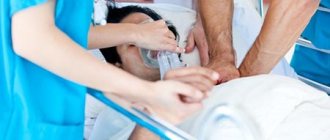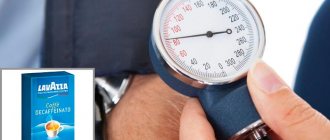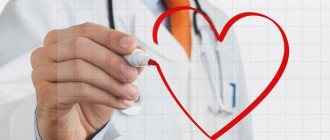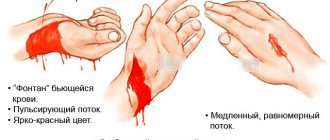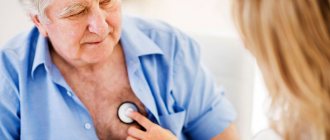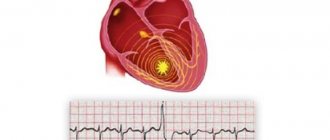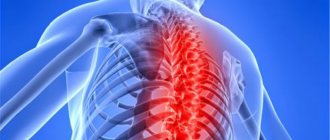First aid for paroxysmal atrial fibrillation
Atrial fibrillation can be caused by a variety of reasons and manifest itself in different ways.
Some patients experience periodic failures of the sinus node, expressed in chaotic muscle contractions. Others experience atrial flutter with a frequency of 60 to 90 beats per minute. Often the symptoms of pathology are completely invisible: especially if the heart rate is within the normal range. However, there are several signs that confirm that paroxysm of atrial fibrillation has begun:
- Noticeable interruptions in the functioning of the heart - it feels like the muscle is contracting unevenly;
- Cardiopalmus;
- Uneven pulse - measurements are taken in the wrists and carotid artery, the indicators will differ;
- Unreasonable shortness of breath observed at rest;
- Dizziness;
- Pain in the sternum;
- Holding your breath in a horizontal position;
- Muscle weakness;
- Panic attacks and anxiety – often patients fear death or worsening of their condition due to lack of oxygen.
Pronounced symptoms are observed in people who already have concomitant cardiac diseases, and heart rate increases to 200-600 beats per minute.
The paroxysmal form of atrial fibrillation is a disruption of the heart muscle that lasts a maximum of a week. If the altered state lasts longer, cardiologists diagnose the chronic form.
- Typical flicker at a frequency of more than 300 beats/min.
- Indicative flutter at a frequency not higher than 200 beats/min.
Forms of paroxysmal arrhythmia
No matter how well the atria work, not every conduction impulse reaches the ventricles. Based on the frequency of ventricular contraction, PMA can be classified into:
- bradysystolic form: frequency less than 60 beats/min;
- tachysystolic: frequency more than 90 beats/min;
- normosystolic or intermediate, with variable frequency.
By localization
Regarding the localization of foci of increased impulse formation, there are 3 types of paroxysm in atrial fibrillation:
- atrial arrhythmia - impulses are formed in the atrial node;
- ventricular arrhythmia - impulses originate in the conduction system of the ventricles;
- mixed arrhythmia - with several pathological foci.
The most common is the intermediate form of rhythm disturbances. Repeated PMA attacks are regarded as recurrent arrhythmia.
Paroxysm of atrial fibrillation - emergency care for atrial fibrillation:
- intravenous administration of "Aymalin" and/or "Novocainamide", "Rytmilen". Contraindications - hemodynamic disorders, pulmonary edema, sharp decrease in blood pressure;
- if the administration of the above drugs is impossible, resort to electrical pulses;
- reduce the ventricular rate with digoxin-based drugs or use Isoptin, Verapamil, Finotypin. Contraindications: arterial hypotension.
The prehospital stage does not involve stopping prolonged attacks of paroxysm; the patient is hospitalized. If the frequency of ventricular contractions is low, emergency treatment tactics should be active, with the prescription of oral drugs Propranolol and/or Quinidine.
Paroxysm of atrial fibrillation - emergency treatment for atrial flutter:
- Hemodynamics during flutter are practically unchanged in comparison with disturbances during flickering. The patient may not feel any symptoms of arrhythmia at all. Emergency care is not provided and they proceed to planned treatment;
- If hemodynamic disturbances nevertheless manifest themselves, which is expressed in dull pain in the sternum, drugs that reduce the frequency of RI or Propranolol are used. Contraindications: arterial hypertension and acute heart failure;
- In 10% of cases, atrial flutter can be stopped only with the help of electrical impulses.
Description of paroxysmal atrial fibrillation
In a normal state, the heart contracts at a frequency of 60-90 beats/min (indicator for an adult). Since pathology is most often registered among the adult part of the population, the norm indicators for this category are taken into account.
The American Heart Association (AHA) indicates that 2.7 million Americans live with some form of AF. The likelihood of developing paroxysmal AF increases with age.
Although paroxysmal AF is not life-threatening in itself, it can have serious consequences. For this reason, it is very important to diagnose and treat the problem as early as possible.
Statistics on paroxysmal atrial fibrillation:
- After 60 years, AF is detected in 5% of the population.
- After 75 years, it is diagnosed in 14% of the population.
- Among the prevalence of various forms of arrhythmias, AF ranks second after extrasystole.
- In European countries, the number of people with AF is about 4.5 million, and in the United States - more than 2 million people.
- In Germany alone, about 1 million people suffer from AF.
- Approximately 13.5 billion euros are spent on the treatment of patients with AF located in the European Union.
- 30% of patients do not have significant heart disease.
Mechanisms of development of PFP:
- Ectopic foci are formed in the atrial myocardium, generating impulses bypassing the sinus node, as a result of which the normal rhythm is disrupted.
- The functioning of the sinus node is disrupted, as a result of which the rhythm becomes irregular and often accelerated.
- With SVC syndrome, there are additional pathways for conducting impulses, resulting in increased heart activity.
- The functioning of the nervous system (central and autonomic departments) is disrupted, which contributes to the disruption of various organs and systems of the body, including dysregulation of the heart.
In some women, changes in hormonal levels, especially during the postmenopausal period, often lead to cardiac dysfunction.
Specifics of the work of the heart muscle
To understand what to do in case of arrhythmia, you need to understand the work of the heart muscle and the reasons why its functioning fails.
In a healthy person, the number of heartbeats varies from 60 to 90 beats per minute.
Contraction of the heart muscle occurs under the control of the sinus node, from where impulses are sent to both ventricles of the heart. This further stimulates blood pumping.
Due to many reasons, blood flow can be disrupted, that is, contractions of the heart go beyond the control of the sinus node and arrhythmia occurs.
With a low heart rate, when the readings are less than the permissible values, bradycardia is diagnosed. Over 90 heart beats per minute means the onset of tachycardia.
During an attack of arrhythmia, which appears suddenly, and the number of contractions exceeds 140 contractions per minute, paroxysmal tachycardia appears.
Doctors identify several types of manifestations of cardiac arrhythmia:
- Flickering. The most dangerous manifestation of tachycardia, which is characterized by chaotic contraction of the heart muscle, reaching up to 600 beats per minute. Help for atrial fibrillation should be provided immediately, as otherwise a heart attack may develop.
- Sinus. It occurs against the background of neuroses and chronic diseases of the cardiovascular system. Characterized by different intervals between muscle contractions.
- Extrasystolic. It manifests itself as an irregular alternation of stopping contractions followed by sharp jerks.
If the patient first encounters manifestations of arrhythmia, he needs to undergo diagnostics at a medical institution, since the type of heart contraction disorders is determined by the doctor after a detailed examination using an ECG.
Reasons for the development of the problem
The main factors in the development of arrhythmia are:
- pathologies of the cardiovascular system;
- ischemic disorders;
- hypertonic disease;
- heart failure in all forms;
- inflammatory processes in the myocardium, pericardium or endocardium;
- congenital and acquired heart defects;
- genetic cardiomyopathy.
Extraneous factors that can cause paroxysm of atrial fibrillation include:
- bad habits such as drinking alcohol, stimulant drugs and smoking;
- electrolyte imbalance;
- lack of potassium and magnesium in the body;
- structural disorders in organs and tissues of the respiratory system;
- acute forms of diseases of infectious origin;
- long-term use of cardiac glycosides and adrenergic agonists;
- constant emotional stress.
Sometimes there are idiopathic forms of arrhythmias, the cause of which cannot be determined.
Symptoms of paroxysmal arrhythmia
Manifestations of arrhythmia are conventionally divided into 2 groups:
- Benign manifestations, the manifestations of which do not require treatment, go away on their own after eliminating the causes that caused them, and do not pose a threat to human life and health;
- Malignant – serious conditions that are most often caused by diseases of the heart and blood vessels.
Arrhythmia of the first group is caused by the following factors:
- Excessive consumption of coffee and strong tea;
- Stressful situations and intense physical activity;
- Alcohol abuse;
- Long-term and uncontrolled use of medications or dietary supplements;
- Menopause.
First aid for arrhythmia of the second group must be provided correctly and immediately, since it provokes a heart attack and can lead to the death of a person.
With arrhythmias, symptoms are not always clearly expressed. Thus, many people are not even aware of problems with heart contractions, and the disease is discovered in them by chance. Quite often this happens at low pressure.
Some patients experience some deterioration in well-being, which has the following symptoms:
- Manifestation of pain in the chest area;
- Increased sweating, weakness, loss of strength;
- Severe dizziness that may lead to loss of consciousness;
- Panic sensations of fear of death, lack of air.
These symptoms are especially pronounced at low pressure, the indicators of which must be taken into account when providing emergency care for arrhythmia.
In addition to these general symptoms, each type of arrhythmia has its own specific manifestations.
Thus, a type of atrial fibrillation, paroxysmal tachycardia, is characterized by paroxysmal manifestations with a sharp increase in heart rate. During paroxysm (as sudden changes in condition are called), the patient experiences panic attacks, which are accompanied by pressure surges and increased sweating. When systolic pressure is low, diastolic pressure increases.
During the manifestation of extrasystole, a person feels characteristic “somersaults” of the heart, and then it freezes.
Emergency care for arrhythmia is provided before the arrival of the medical team by witnesses of the attack.
The severity of symptoms is directly dependent on the frequency of ventricular contractions. Minor deviations from the norm (90-100 contractions/min) are not clearly visible.
The tachysystolic form, most often diagnosed, has the following symptoms:
- a feeling of “fading” of the heart, noticeable interruptions;
- rapid heartbeat;
- uneven pulse;
- shortness of breath at rest, worsening with physical exertion;
- shallow breathing, inhalation holding in a horizontal position, dizziness;
- chest pain;
- fainting, muscle atony;
- perspiration, hyperhidrosis;
- panic attacks.
A critical decrease in contraction frequency leads to hypoxia and deterioration of cerebral blood supply. The patient faints, sometimes accompanied by respiratory arrest. This is an emergency condition requiring immediate resuscitation.
Clinical picture of the pathology
Symptoms in mild forms of heart damage may be completely absent. Episodes of atrial fibrillation may occur without obvious manifestations, or a person may notice slight discomfort in the chest. The symptoms are not the same in each specific case of arrhythmia attacks.
The clinical picture of cardiac arrhythmia can be highly variable and include the following components:
- chest pain;
- hypotension (pressure drop);
- feeling of rapid heartbeat;
- general weakness, dizziness;
- feeling of shortness of breath and lack of air;
- cold hands and feet;
- the appearance of cold sweat;
- chills, trembling;
- faintness, loss of consciousness;
- increased urination;
- arrhythmia (irregularity) of the pulse in the arm, neck;
- panic, fear, feeling of imminent death;
- pale skin, blue lips.
The main symptom of atrial fibrillation with paroxysmal manifestations in a number of patients is the sudden development of a stroke, which can occur after a long asymptomatic course of atrial fibrillation. This type of AF development is the most severe and can be fatal.
With a long course of PMA, the quality of life decreases: stress tolerance decreases, a person is forced to give up sports, flights, change jobs, or even become disabled.
Diagnostic methods
In order to clarify the preliminary diagnosis, the cardiologist listens to heart rhythms. Arrhythmia is detected, except in cases where flutter occurs every 2, 3 or 4 contractions.
In such a situation, the correct form of MA is recognized and the patient is prescribed an ECG. A cardiogram is the method of choice for diagnosing pathological rhythm changes.
Cardiac ultrasound with ECHO-CG is used as an additional diagnostic method. Differentially important parameters: atrium size, degree of valve wear. The choice of treatment tactics depends on the results obtained.
Paroxysm of atrial fibrillation can be treated with medications prescribed by a doctor. If a person knows the diagnosis, there should be no difficulties with the appointment - the cardiologist provides a consultation on how to act in case of rhythm disturbance. It is recommended to adhere to this method of treatment:
- When an attack has pronounced symptoms, is poorly tolerated by the patient, and is accompanied by fluctuations in heart rate, an antiarrhythmic drug is used, administered intravenously. This can be Aymalin in a dosage of up to 100 mg, Ritmilen - up to 150 mg or Novocainamide - 1 g;
- In patients with pulmonary edema and other severe disorders, stopping an attack at home is impossible; mandatory hospitalization and the use of electrical pulse therapy are required;
- If the paroxysm continues for several days, it is strictly forbidden to take medications - the patient is admitted to the hospital and undergoes planned treatment. This is due to the high risk of blood clots;
- When an attack is accompanied by a low heart rate, tablets are used for emergency assistance, for example, Propranolol - up to 40 mg or Quinidine in a similar dosage.
Difficulties in providing emergency care arise if the paroxysm began suddenly; the patient had not previously been bothered by such symptoms. In this case, it is recommended to carry out oxygen inhalations and take a Phenazepam tablet. Other manipulations are fraught with serious consequences.
If a person faints and stops breathing, an emergency call to doctors and resuscitation is required. Self-medication in this case is unacceptable.
Algorithm of actions to provide assistance
In most cases, you can help with arrhythmia at home. To do this, you need to calmly and consistently perform certain actions. In addition, people who have chronic heart disease and often experience irregular heartbeats can perform these actions on their own.
- Provide the patient with a comfortable position by first sitting him up and then laying him down. Changing positions is necessary to determine the position in which a person will experience relief from symptoms. If the condition does not improve, provoke reflex vomiting by irritating the larynx with your fingers. Vomiting will help restore the correct rhythm of contractions.
- Provide free access of oxygen in the room.
- Measure your blood pressure and count the number of pulse beats per minute. If you have low blood pressure, you can use only those medications prescribed by your doctor or wait for his prescription.
- The patient must perform several breathing exercises, which consist of taking a deep breath and holding the breath for a few seconds. While holding your breath, gently press on the patient’s eyelids. The number of pressures should not be less than 18 times per minute. Such exercises help not only restore the rhythm of the heart muscle, but also calm the patient.
- To relieve cardiac arrhythmia at home, you can take sedatives. This point is especially relevant for patients suffering from heart disease. Corvalol, tincture of motherwort or valerian, valocordin are drugs that can be used before the arrival of medical workers.
If the arrhythmia manifests itself for the first time and has pronounced symptoms, a person may experience a panic attack. At this moment, it is important to support and reassure the patient, explaining that the symptoms are temporary and will soon pass.
First aid for tachycardia consists of the following:
- Sit or lay the patient down so that he is comfortable;
- Tell us about the principles of breathing exercises and start doing it: take a deep breath while holding your breath, alternating with exhalation;
- Slowly and gently massage the site of pulsation of the carotid artery;
- Ask the patient to close his eyes and gently press on the eyelids according to the pattern described above;
- Wash or dry the patient's face with cold water.
You can eliminate the symptoms of tachycardia at home with a simple recipe. You need to make a tincture from pharmaceutical sedatives. To prepare it, mix alcoholic tinctures of valerian root, hawthorn and rose hips, and motherwort in proportions of 1 to 1. A small spoon of the resulting product is slowly drunk with water.
First aid for cardiac arrhythmia, which manifests itself as bradycardia, is provided in the following sequence:
- The patient is placed on his back, raising his legs so that they are above the level of his head;
- Provide free access to fresh air;
- In case of severe pain in the chest area, you need to take Nitroglycerin.
Emergency care for paroxysmal tachycardia depends on the degree of its manifestation. Usually it does not require emergency action and consists of taking cardiac glycosides.
However, in the event of a heart attack with pronounced symptoms of heart failure, emergency measures for paroxysmal tachycardia include urgent defibrillation and immediate hospitalization.
Basics of disease treatment
Paroxysmal atrial fibrillation, which can only be treated in a hospital setting, is dangerous due to its variable course. The choice of methods is based on the period of limitation of the attack:
- if it was less than 2 days ago, then they try to restore the rhythm (sinus);
- if more than 2 days have passed, the risk of embolism caused by rhythm restoration increases.
Warfarin, which has anticoagulant properties, is used as an adjuvant. Blood thinning should prevent the formation of blood clots that thrombose the blood vessels. Rhythm restoration begins no earlier than after 3 weeks.
To monitor the patient's condition, transesophageal ultrasound is used, during which the presence/absence of clots in the atrium is determined. Patients with a negative result are transferred to an intensive treatment cycle without waiting the prescribed 3 weeks.
Pharmaceuticals offer several basic means for relieving attacks of PMA:
- based on novocaine - reduces blood pressure;
- based on digoxins - to control the frequency of contractions;
- “Cordarone”, “Propane” - for use at home.
Drugs for intravenous injection are administered only under the supervision of a physician. Emergency measures for paroxysmal atrial fibrillation will stop the attack with a 95% probability.
If drug treatment does not bring positive results, the patient is sent to a course of therapy using an electric discharge.
Electropulse therapy is also prescribed in the presence of complications resulting from paroxysmal attacks.
What does this do for the patient? The conduction system restarts, and the rhythm stabilizes due to the excitation of the sinus node.
With recurrent atrial fibrillation, the patient is referred for surgery. A laser is used to cauterize the pathological focus of excitation in the myocardium.
To perform the procedure, an arterial puncture is made using several catheters. The success rate of radiofrequency ablation (RFA) surgery is about 85%. If the first operation was not successful, the procedure is repeated.
Important points
Knowing what to do in case of cardiac arrhythmia is sometimes not enough, since in order to eliminate repeated manifestations of the disease, you need to strictly adhere to certain rules, which many patients violate, which provokes its repeated manifestations.
What not to do if you have arrhythmia:
- Start cardio training on your own, without medical advice;
- Use medications and dietary supplements not prescribed by a cardiologist;
- Expect the symptoms of the disease to disappear without treatment.
At the first signs of illness, you need to undergo a detailed examination. This primarily concerns arrhythmia with low blood pressure.
Every time the heart rhythm is disturbed, a person is in mortal danger, so it is necessary to identify the causes of the arrhythmia as early as possible and begin to treat it.
Complications of the disease
The transition of the disease to a permanent form threatens a serious decrease in the quality of life.
The most common complication is the appearance of blood clots in the heart, because the blood does not leave the atria in full, so it stagnates. When a thrombus embolizes, it can cause an ischemic stroke.
A common complication is heart failure. According to some reports, patients with atrial fibrillation are at risk of developing Alzheimer's disease.
Complications: what happens if help is not provided in a timely manner?
Not in all cases, the attack can be stopped effectively and quickly - for example, according to doctors, in 10% of cases only electric pulses help, and drugs are powerless. What consequences can result from failure to provide assistance to a patient?
Negative consequences also develop, such as:
- Pulmonary edema and acute heart failure - the course of the disease is significantly aggravated;
- Hypoxic shock - it is caused by a sharp decrease in pressure and a disruption in the supply of oxygen to organs. Most often, this consequence provokes too frequent muscle contraction;
- Fainting;
- Heart attack or angina - caused by disturbances in coronary blood flow;
- Formation of blood clots - when urgent medication is ignored, and more than 2 days have passed since the onset of the attack, clots form in the blood. They clog blood vessels, leading to death of limbs, gangrene, and stroke.
However, such severe complications are not a reason to panic. It is quite possible to stop an attack without consequences for your health, you just need to not ignore the signs of an attack that has begun.
Paroxysmal atrial fibrillation, emergency care for which was ignored or incompletely provided, leads to changes in the intensity of blood flow. Which, in turn, causes embolism in the atrium cavity. In addition, refusal of medical care will provoke:
- pulmonary edema due to acute heart failure. Exacerbates rhythm disturbances;
- hypoxic shock with a characteristic decrease in pressure and impaired oxygen transport to internal organs. Develops as a consequence of a critically high (more than 150 beats/min) or critically low (less than 40 beats/min) frequency of ventricular flutter;
- cardiac arrest;
- fainting;
- pathological change in coronary blood flow, with the risk of angina and heart attack.
Paroxysm of atrial fibrillation: what is it - thromboembolic complications?
The danger of thromboembolism becomes more serious if more than two days have passed since the attack.
During this time, clots of impressive size form in the atrium. Blood clots travel to the brain, limbs and heart, leading to heart attack, stroke or gangrene.
Medical emergency care
Medical Center
Intravenously slowly 0.5-1.0 ml of 0.06% solution of korglykon or 0.3-0.5 ml of 0.05% solution of strophanthin in 10 ml of 0.9% sodium chloride solution or 10 ml of 5% glucose solution. At the same time, intravenous drip of 400 ml of 5% glucose solution with 4-6 units of insulin, orally 4-6 g of potassium chloride in 100-200 ml of water. If tachycardia persists, administer 2 ml of 0.25% anaprilin solution intravenously (contraindicated in arterial hypotension). If there is no effect, 2.5 ml of 10% solution of novocainamide up to 10 ml is administered intravenously in fractional doses at intervals of 5-10 minutes, with simultaneous administration of 0.3-0.5 ml of 1% mesatone solution under the control of blood pressure and ECG.
After restoration of sinus rhythm or a decrease in ventricular rate, stabilization of blood pressure, elimination of pain and relief of pulmonary edema, evacuation to the hospital (medical hospital) by ambulance, lying on a stretcher, accompanied by a doctor.
Omedb, hospital
Intravenous drip of 400 ml of 5% glucose solution with 10 units of insulin and 40 ml of panangin or 2 g of potassium chloride in the form of a 4% solution for injection. Against this background, 2-6 ml of a 0.25% solution of verapamil (finoptin) is injected intravenously over 0.5-1 min. If there is no effect, 10 ml of a 10% solution of novocainamide is administered intravenously after 15-20 minutes under blood pressure control. In case of arterial hypotension or lack of effect from drug therapy - electrical pulse therapy, in case of atrial flutter - transesophageal cardiac stimulation.
Cardiac rhythm and conduction disorders
can significantly aggravate the course of many diseases, and also often pose a direct threat to the patient’s life.
Paroxysms of arrhythmia
, having occurred once, are repeated in most cases, which leads to a significant decrease in working capacity and often to disability. Timely diagnosis and effective treatment of paroxysmal tachyarrhythmias can significantly alleviate the condition of patients and prevent serious complications.
Supraventricular paroxysmal tachycardia.
Supraventricular paroxysmal tachycardias combine a group of rhythm disturbances in which the ectopic pacemaker is localized above the common trunk of the His bundle. There are sinus-atrial, i-atrial and atrioventricular nodal supraventricular tachycardias. In most cases, they have a similar electrocardiographic picture and their accurate diagnosis without special examination is difficult. When making a diagnosis in such cases, one is limited to the general formulation: supraventricular paroxysmal tachycardia.
Sequence of measures to relieve paroxysm
of supraventricular tachycardia.
- Treatment may begin with vagal tests (carotid sinus massage, Valsalva maneuver).
Inject intravenously a stream of isoptin - 10 mg in 10 ml of isotonic sodium chloride solution over 2 minutes. If there is no effect, 5-10 mg of this drug can be re-administered after 10 minutes.
Inject digoxin (0.5-1.0 mg) intravenously into 20 ml of isotonic sodium chloride solution over 4-5 minutes.
Intravenously inject disopyramide (100-150 mg or 2-3 ampoules) into 20 ml of isotonic sodium chloride solution for 4-5 minutes.
Inject anaprilin (5 mg) intravenously into 20 ml of isotonic sodium chloride solution or 5% glucose solution over 5 minutes.
Inject cordarone at a dose of 5 mg/kg in 20 ml of 5% glucose solution slowly intravenously over 3 to 5 minutes.
Inject novocainamide intravenously over 4 - 5 minutes - 10 ml of 10% solution.
If there is no effect of drug therapy, electrical defibrillation or frequent atrial pacing is performed.
Atrial fibrillation
Among paroxysmal rhythm disturbances, atrial fibrillation
is the most common. This form of arrhythmia is characterized by the presence of very frequent (more than 350 per minute) and irregular atrial impulses, disorganizing the activity of the atria and leading to arrhythmic contractions of the ventricles.
ECG signs of atrial fibrillation include:
- missing tooth R;
erratic atrial oscillations (F waves) with a frequency of more than 350 per minute;
different duration of intervals between ventricular complexes.
To relieve an attack of atrial fibrillation
The following drugs are administered:
- Novocainamide - 10 ml of a 10% solution in 10 ml of a 5% glucose solution or isotonic sodium chloride solution intravenously for 3 to 5 minutes under blood pressure control.
Ritmilen - 100 -150 mg in 20 ml of isotonic solution intravenously for 4 - 5 minutes.
Quinidine - orally in powders of 0.2 g every 2 hours until the arrhythmia is relieved, the maximum daily dose is 1.8 g.
The effectiveness of antiarrhythmic drugs increases after the administration of panangin or a polarizing mixture. If atrial fibrillation cannot be stopped with medications or the paroxysm quickly leads to severe hemodynamic disturbances (arrhythmic collapse, pulmonary edema), then electrical pulse therapy is performed.
It is not advisable to stop the arrhythmia
in the following categories of patients:
- with a sharp enlargement of the heart, especially the left atrium;
poorly tolerated aptiarrhythmic drugs;
with sick sinoatrial node syndrome (loss of consciousness at the moment of relief of an attack);
with active myocarditis, endocarditis, thyrotoxicosis;
with frequent attacks that cannot be prevented with antiarrhythmic drugs.
In these cases, treatment with cardiac glycosides (digoxin) is indicated, which slows down the ventricular rhythm and thereby normalizes hemodynamics.
Atrial flutter
Atrial flutter
- this is paroxysmal tachycardia, characterized by a regular rhythm of atrial contraction with a frequency of about 250 - 300 per minute and the presence of atrioventricular block in most patients, which ensures a rarer ventricular rhythm.
To ECG signs of atrial flutter
include:
- the presence of a “sawtooth” shape of flutter waves (F waves) in the II standard or right chest leads;
in most cases, one wave passes into another, so there are no isoelectric intervals between them;
waves have a frequency of more than 220 per minute and are characterized by the same height and width;
in most patients, incomplete atrioventricular block is recorded, the degree of which is constantly changing;
ventricular complexes usually have a normal duration.
Relieving paroxysm of atrial flutter
includes the following:
- Treatment usually begins with the use of cardiac glycosides (rapid saturation method). Digoxin is administered intravenously, 0.5 mg 2 times a day, preferably with potassium salts. As a result of digitalization, the degree of atrioventricular blockade increases and hemodynamic parameters improve. Typically, sinus rhythm is restored within 3 to 4 days.
If there is no effect from the use of cardiac glycosides, quinidine is prescribed - 0.2 g every 2 hours until the maximum daily dose of 1.8 g is reached.
If atrial flutter
cannot be eliminated with the help of medications or the paroxysm quickly leads to a decrease in blood pressure and the development of heart failure, then electrical pulse therapy is performed.
Atrial flutter is more difficult to treat with medication than other forms of pancreatic tachycardia. In this regard, the treatment of this rhythm disorder is widely
Frequent transesophageal electrical stimulation of the atria is used, the effectiveness of which reaches 70 - 80%.
Paroxysmal ventricular tachycardia
Ventricular tachycardia is defined as 3 or more impulses in a row of ventricular origin with a rhythm frequency of more than 100 per minute. Attacks of ventricular tachycardia are much more likely than attacks of supraventricular tachycardia, complicated by heart failure (pulmonary edema) and cardiogenic shock, and often progress to ventricular fibrillation. Therefore, establishing the correct diagnosis and choosing effective therapy are especially important for this cardiac arrhythmia.
ECG signs of ventricular tachycardia include:
- the duration of the ventricular complex is more than 0.14 s;
significantly dilated ventricular complexes are predominantly positive or predominantly negative in all chest leads;
the appearance during tachycardia of normal or almost normal duration ventricular complexes (atrial “captures” or drain complexes);
When recording an intraesophageal ECG, the presence of atrioventricular dissociation is detected ( P
recorded independently of ventricular complexes);
the same shape of ventricular complexes and ventricular extrasystoles recorded outside an attack;
Relieving an attack of ventricular tachycardia.
At the first paroxysm of tachycardia, as well as during myocardial infarction, treatment of ventricular tachycardia should begin with the prescription of lidocaine. The drug is administered intravenously in a bolus at a dose of 100 - 150 mg over 3 - 4 minutes in 20 ml of isotonic solution. If there is no effect from the use of lidocaine, the following drugs are prescribed:
- Ethmozin - 100 - 150 mg (4-5 ml of 2.5% solution) in 20 ml of isotonic sodium chloride solution intravenously in a stream for 4 - 5 minutes.
Cordarone - 5 mg/kg in 20 ml of 5% glucose solution intravenously in a stream for 4 - 5 minutes.
Novocainamide - 10 ml of 10% solution in 10 ml of 5% glucose solution intravenously for 4 - 5 minutes.
Ritmilen - 100 - 150 mg in 20 ml of isotonic solution or 5% glucose solution intravenously for 4 - 5 minutes.
To treat ventricular tachycardia, you can use mexitil, ajmaline, anaprilin, ornid, rhythmonorm. If paroxysm of tachycardia is complicated by acute heart failure or cardiogenic shock, then electrical pulse therapy is the most effective and safe.
Ventricular fibrillation
Ventricular fibrillation is arrhythmic, uncoordinated, very frequent (more than 300 per 1 min) ineffective contractions of individual groups of myocardial fibers. The most common cause of ventricular fibrillation is acute coronary insufficiency - myocardial infarction. The vast majority of cases of sudden death in coronary artery disease are caused by the development of this fatal form of arrhythmia. The release of blood into the aorta and pulmonary artery during ventricular fibrillation practically stops due to the ineffectiveness of their contractions. Blood pressure decreases, blood flow is interrupted, and if it does not resume within 4 - 5 minutes, then biological death occurs. In the first 10 seconds after cardiac arrest, consciousness is disturbed, and then rare agonal breathing appears, the pulse in large arteries disappears, the pupils dilate and do not respond to light.
To the ECG signs of ventricular fibrillation
include:
- irregular, unequal shape and amplitude fibrillation waves. Their frequency is more than 300 per minute;
QRS complex
S-T
segment and the
T
are not differentiated;
there is no isoelectric line.
Timely resuscitation measures (in the first 4 - 5 minutes) can ensure the restoration of vital body functions. Regardless of the mechanism of circulatory arrest, the first treatment measures are the same and include external cardiac massage and mechanical ventilation. Then, after recording the ECG, defibrillation is performed. If after defibrillation the heart rhythm is not restored and small-wave ventricular fibrillation remains on the electrocardiogram, then 0.5-1 ml of a 0.1% solution of adrenaline hydrochloride and 1 ml of 0.1% atropine sulfate in 10 ml of isotonic sodium chloride solution. It is assumed that under the influence of adrenaline hydrochloride, small waves of fibrillation turn into large ones, which are more easily stopped by subsequent discharges of a defibrillator of maximum power. Due to the fact that metabolic acidosis develops very quickly when blood circulation stops, immediately begin an intravenous infusion of sodium bicarbonate at a dose of 0.5 mg/kg (7.5% solution) every 8-10 minutes of resuscitation until cardiac activity is restored.
If properly performed resuscitation measures do not restore cardiac function within 60 minutes, there is virtually no hope for revival. They are usually stopped.
Atrial fibrillation is a severe heart rhythm disorder that occurs in certain diseases of the cardiovascular system and is accompanied by frequent, heterogeneous and irregular contractions of the atrial myocardium. Atrial fibrillation may accompany heart defects.
Forecast and prevention of the disease
The prognosis for life with this disease is quite favorable. The most important thing is to control the frequency of contractions, maintaining it within the age norm. Prevention of thromboembolism is no less effective.
Stopping frequent attacks requires preventing the formation of blood clots by taking Warfarin, which is an addition to antiarrhythmic treatment and a vitamin K antagonist.
A control blood test is taken by the patient once a month; the indicator of the success of therapy is the INR (international normalized ratio), maintained at a level of 2.5-3.5.
Recommended preventive measures:
- Treatment of pathologies leading to arrhythmia.
- Replenishment of magnesium and potassium deficiency.
- In case of pathology of the nervous system, against the background of which paroxysmal atrial fibrillation develops:
- physical activity is reduced to a minimum, diet, treatment of constipation and obesity are prescribed, the activity of the vagus nerve is suppressed (vagal type of involvement of the nervous system);
- emotional stress is prevented, sedatives are prescribed, the duration of rest is increased, restrictions are introduced on the use of caffeine-containing drinks and tobacco, and gentle exercise therapy is useful (hyperadrenergic type of involvement of the nervous system).
Classification of the disease
Depending on the specific heart rate per minute, the following types of pathology are distinguished:
- Fluttering with a contraction frequency of up to 200 beats.
- Flickering with a contraction frequency of 200 beats.
Since the ventricles begin to contract more intensely against the background of arrhythmia, the classification takes into account the following forms of the disease:
- Tachysystolic (tachyform) - the ventricles contract more than 90 times per minute.
- Bradysystolic - the rate is less than 60 times per minute.
- Normosystolic - the contraction rate is in the range of 60 - 90.
Another classification divides arrhythmia into the following forms:
- ventricular, with severe disturbances of heart rhythms, clearly expressed by ECG;
- atrial, with changes in His bundle conductivity;
- mixed, with a combination of the two indicated forms.
The first identified episode of the disease should be distinguished from paroxysmal fibrillation itself, in which the paroxysm is repeated and lasts up to 7 days (usually up to 2 days).
The disease can persist (last more than a week) or become a long-persistent type (the attack lasts up to a year).
With frequent exacerbations of cardiac arrhythmia, they speak of the recurrent type. The permanent type of the disease implies the persistence of symptoms of atrial fibrillation for more than a year with the ineffectiveness of the therapy.
According to the signs, AF is divided into classes:
- The first is that there is no clinical picture.
- Second, the quality of life does not suffer, but there are mild signs of illness.
- Third - there are numerous complaints, the patient has to limit himself in life.
- Fourth - the clinic is bright, there are disabling complications.


